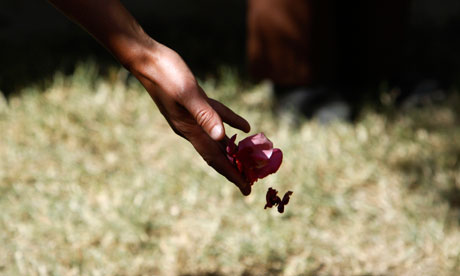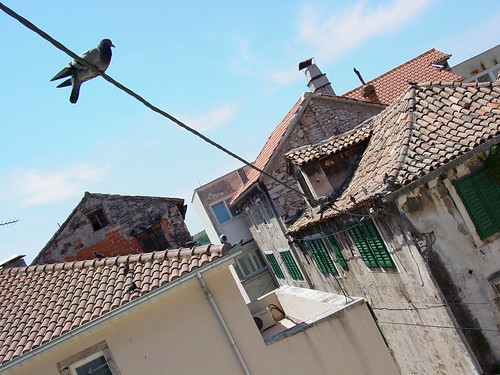 Since her teenage daughter went missing eight years ago, Silvia Ortiz has known that any progress in the case depends on her alone. "I still don't know if Fanny is alive or not. Maybe she is in a mass grave and I will never find her, but I have to keep looking," Ortiz says. "If I don't, who will?"
Since her teenage daughter went missing eight years ago, Silvia Ortiz has known that any progress in the case depends on her alone. "I still don't know if Fanny is alive or not. Maybe she is in a mass grave and I will never find her, but I have to keep looking," Ortiz says. "If I don't, who will?" This was true even in the hours immediately after Fanny's disappearance on her way home from a basketball match in the city of Torreón in northern Mexico. With the police dragging their feet, the family brought in sniffer dogs that followed the 16-year-old's trail until it stopped abruptly at a roadside. Then they found clues linking the abduction to criminals associated with the Zetas drug cartel. When the authorities still did nothing, they discovered that the official heading the investigation was the lover of one of their prime suspects.
In the following years, the pattern was repeated: Ortiz turned up fresh leads, only for the authorities to ignore them. Meanwhile, Mexico's drug war spiralled out of control: tens of thousands were killed – more than 100,000 by some counts – and many others simply vanished. There is no reliable data on the number of people forcibly disappeared during the drug violence, but a document from the Mexican attorney general's office leaked to the Washington Post lists 25,000 adults and children who have gone missing since the start of the Calderón offensive. The documents were reportedly leaked by bureaucrats frustrated with the outgoing government's failure to openly recognise the size of the problem.
For Ortiz, the trauma of her loss was revived in October, when the Zetas' leader, Heriberto Lazcano – known as "El Lazca" – was shot dead by the Mexican navy in an episode shrouded in confusion. Lazcano's body was apparently snatched from a funeral parlour a few hours after his death, but reports soon emerged that a photograph found among his belongings showed the capo sitting beside a young woman who resembled Fanny.
"Of course my heart jumped," Ortiz says. "I would be lying if I said that I didn't believe it was her at first, but my son kept saying: 'No way, forget it, it isn't her, look at the nose.'"
Even in that first flush of false hope there was terror. Whether it was or wasn't Fanny, being so publicly associated with Lazcano was dangerous. If Fanny had ended up in Lazcano's hands, she would now be especially vulnerable to the attentions of rival cartels.
Things only got worse when the Coahuila state attorney general told reporters a recently arrested Zetas commander nicknamed "the Squirrel" had confessed that he abducted Fanny and took her to Lazcano. "It is hard to explain the enormous pain that this generated for us," Ortiz says. "We didn't sleep at all. We jumped up at every tiny noise to see if they were coming for us."
Ortiz soon became convinced that the woman in the photograph was not Fanny. She says she tracked down the real subject of the picture, who told her the man by her side was not even Lazcano. Then she found out from federal officials that neither the story about the photograph being found in his clothes, nor the Squirrel's confession, were true. After a moment in the media spotlight, Ortiz fears Fanny will slip back into anonymity "like all the thousands of other disappeared people".
The attention given to Fanny's case in recent weeks was certainly unusual, but her family's investigative efforts and determination to keep up the pressure in the face of government inaction, incompetence or complicity is not.
Jorge Verástegui found links to local police behind the abduction of his brother and nephew in Coahuila after a religious meeting in 2009. This brought "friendly advice" from officials to tone things down for his own safety, which he ignored: "I don't know at what point I broke the fear barrier but the promise that I have made to myself and my family is much bigger."
Verástegui pins his hopes on collective action. He admits the relatives' group in Coahuila that he helped form, which has registered 258 forced disappearances since 2008, has not won significant improvements in investigations. But, he says, it has provided mutual support and chiselled away at the widely held assumption that those who go missing in drug war hotspots must have some link to organised crime. "We are cleaning the image of the disappeared," he says. "People are beginning to realise that this is something that could happen to anybody."
The dynamics of disappearances vary but Verástegui believes that in Coahuila they are associated with forced recruitment into the cartels, suggesting some of the missing could be packing drugs in safe houses or working as hitmen. "No other explanation fits the fact that ransoms are not demanded in most cases," he says. "It is also a hypothesis that gives us hope of finding them alive."
Fanny's mother will never let go of that hope until she has a fully identified body to bury. "All I want is to see my baby," she says. "All I want is to tell her I love her, and to tell her I want to heal her wounds."
Saturday 1 December 2012
http://www.guardian.co.uk/world/2012/nov/30/mexico-disappeared-drug-war-calderon







